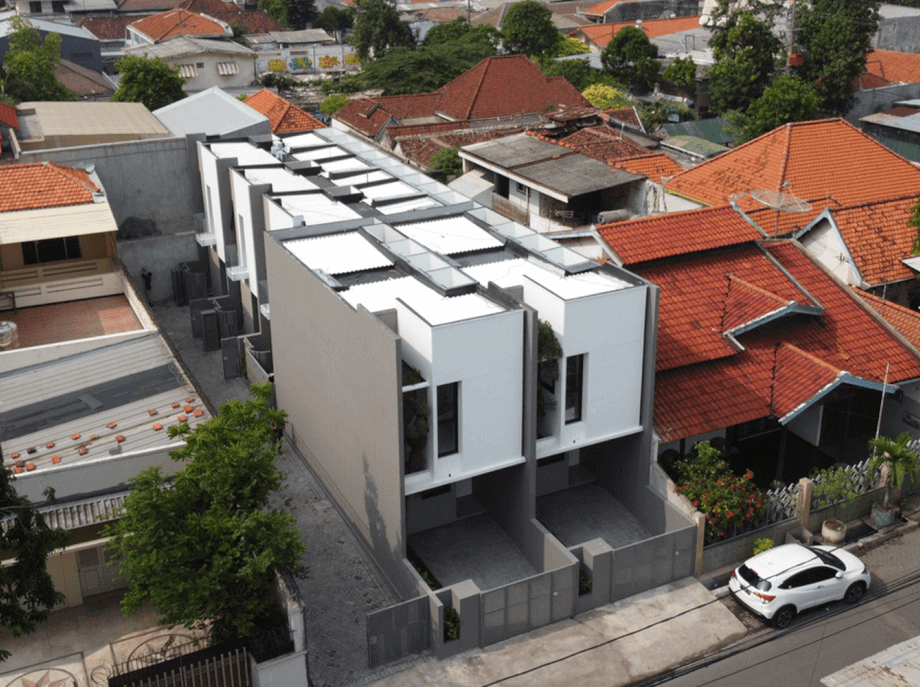A Solution or a Step Backward?
The Indonesian government’s proposal to develop ultra-compact, subsidized housing for urban youth has ignited a firestorm of controversy, pitting the urgent need to address a massive housing deficit against fundamental questions of human dignity and livability. The plan, spearheaded by the Public Housing and Settlements Ministry, aims to provide affordable homes for young city dwellers, particularly Generation Z, who are increasingly priced out of the urban real estate market. However, critics, including urban planners, architects, lawmakers, and potential residents, are sounding the alarm, arguing that the proposed “mini houses” are not just small, but dangerously inadequate, potentially creating new social problems while failing to solve existing ones.
At the heart of the debate are prototype units recently showcased in a South Jakarta mall. With a starting price of Rp 100 million (US$6,121), these homes offer a single-bedroom unit measuring a mere 14 square meters on a 25-square-meter plot, and a slightly larger two-bedroom option of 23.4 square meters. The government defends the initiative as a pragmatic response to soaring land prices and a housing backlog estimated at nearly 10 million units. But as details of the plan have emerged, the backlash has been swift and severe, with opponents labeling the concept as “inhumane” and a regression in the fight for decent housing.
This clash highlights a critical dilemma facing rapidly urbanizing nations: in the race to provide shelter, how small is too small? The controversy over Indonesia’s mini houses has become a national conversation about more than just square meters; it’s a debate about the very definition of a home and the quality of life the state should provide for its citizens.
What Exactly is Being Proposed?
To understand the fierce opposition, one must first examine the specifics of the government’s plan. In partnership with real estate giant Lippo Group, the Public Housing and Settlements Ministry unveiled two prototypes intended for development in Jakarta and its satellite cities of Bekasi, Bogor, Depok, and Tangerang. These areas form a sprawling megacity where affordable housing is notoriously scarce.
The proposed units are starkly minimalist. The smallest model, a single-bedroom house, offers just 14 square meters of living space, which includes a living area and a bathroom, all situated on a tiny 25-square-meter plot. The two-bedroom model provides 23.4 square meters of floor space on a 26.3-square-meter plot. Curiously, both designs feature a carport that is nearly as large as the interior living area, a design choice that has drawn its own share of criticism for prioritizing vehicles over human living space.
The government’s rationale is straightforward. Urban Housing Director Sri Haryati explained the goal is to cater to a specific demographic. She stated on Monday that these smaller homes aim to attract young people, particularly Gen Zers who wish to live closer to their workplace in minimalist and affordable homes in urban areas. The target audience is young professionals who, according to the ministry, prioritize location and affordability over spacious living. The price point, ranging from Rp 100 million to Rp 140 million (US$6,121 to US$8,570), is designed to be accessible to this group, many of whom feel locked out of the housing market. A 2024 survey by consulting firm Inventure Indonesia underscores this reality, finding that two out of three Gen Z respondents are pessimistic about buying a house in the next three years due to soaring prices.
“Inhumane” and “A Step Backward”: The Backlash Begins
Despite the government’s stated intentions, the proposal has been met with a wave of condemnation from a wide array of experts and civil society groups. The criticism centers on three main fronts: the violation of existing standards, the potential for severe psychological and social harm, and the public’s outright rejection of the concept.
Falling Short of Livability Standards
One of the most immediate and damning critiques is that the proposed homes fail to meet both national and international standards for livable housing. Critics point out that the designs lack essential features for a healthy living environment, such as adequate natural lighting and cross-ventilation. More formally, the plan appears to directly contravene a 2023 decree from the Public Works and Housing Ministry, which stipulates that a subsidized house must be built on a plot of 60 to 200 square meters, with a minimum building area of 21 square meters. The new proposal seeks to slash these minimums to a 25-square-meter plot and an 18-square-meter building area.
The plan also falls well short of global benchmarks. The United Nations Human Settlements Programme (UN-Habitat) recommends a minimum living area of 30 square meters per house. The Indonesian government’s own technical guidelines from 2002 suggest a minimum space requirement of 7.2 square meters per person, meaning a house for a family of three should be at least 21.6 square meters. The World Health Organization (WHO) sets an even higher bar, suggesting an ideal of 12 square meters per person.
This disregard for established standards has led to sharp rebukes. Lawmaker Yanuar Arif Wibowo of House Commission V delivered a particularly stinging critique, drawing a comparison to one of the world’s most crowded cities. He said during a forum:
“We are not Hong Kong. We still have land. Don’t reduce housing to permanent cages.”
Public policy expert Trubus Rahadiansyah from Trisakti University echoed this sentiment, calling the plan inhumane. He argued:
“Even 21 square meters is already too cramped. Reducing it further is inhumane.”
The Indonesian Institute of Architects (IAI) has also voiced strong opposition. Its chairman, Georgius Budi Yulianto, offered an emotional critique of what such a small space means for human experience:
“Eighteen square meters is half the size of a garage. Where do you cry in peace, or let your child play, or simply breathe?”
Beyond Bricks and Mortar: Fears of a “New Poverty Cycle”
Experts warn that the negative consequences of such housing extend far beyond physical discomfort. Urban planning observer Yayat Supriatna cautioned that the policy could trap residents in a “new poverty cycle,” trading financial hardship for what he termed “spatial poverty.” He argued that the government’s approach is purely economic, ignoring the profound psychological and sociological impacts of cramped living conditions.
A house, critics argue, is not merely a place to sleep but a space for life to unfold. It is where children grow, study, and play, and where families build relationships. Confining a family to a space smaller than a typical hotel room can lead to chronic stress, increased domestic conflict, and limited opportunities for personal development. Georgius Budi Yulianto of the IAI warned that the tension created by limited space can foster “fragile and aggressive social ties,” potentially degrading the social fabric of entire neighborhoods.
Tulus Abadi, chairman of the Indonesian Empowered Consumers Forum (FKBI), raised concerns about the long-term viability of these communities. He noted that such tiny homes cannot accommodate the evolving needs of a growing family. As children are born and grow older, families will inevitably need more space, potentially leading them to abandon the homes. This could result in blighted neighborhoods filled with empty, deteriorating dwellings, creating a new set of urban problems. He stated:
“This proposal represents a step backward in the fulfillment of the right to a decent home. A house is not just a shelter. It is a space that supports physical health, emotional stability, family life and overall well-being.”
“Subsi-DIE”: Public Rejection and Gen Z Pessimism
The plan has not only drawn the ire of experts but has also been met with ridicule and rejection from the public, including its target demographic. On social media, the proposal was mockingly dubbed “rumah subsi-DIE,” a play on the Indonesian words for subsidy (subsidi) and die, reflecting a grim view of the quality of life on offer. This sentiment was echoed by potential occupants like Rahma, a university student from Depok who viewed the display unit.
She told reporters:
“I saw the display [unit], and I couldn’t even imagine stretching out comfortably in it.”
Rahma added that she would rather continue renting a larger space than invest in a home that could compromise her physical and mental health. Her view highlights a critical disconnect between the government’s assumptions and the actual desires of young Indonesians. While they seek affordability, they are not willing to sacrifice their basic well-being for it.
Why is the Government Pushing for Smaller Homes?
Faced with such widespread criticism, the government has mounted a defense rooted in the immense challenges of Indonesia’s housing market. The push for mini houses is not arbitrary but a response to a complex set of pressures, including a staggering housing deficit and the prohibitive cost of urban land.
A Numbers Game: The 9.9 Million Unit Deficit
The primary justification for the policy is the urgent need to address Indonesia’s national housing backlog, which officially stands at 9.9 million units, though some estimates place it as high as 15 million. A staggering 80 percent of this shortage is concentrated in urban areas. This deficit is a key focus of the current administration, which has set an ambitious target of building three million homes by 2025.
However, this ambition is constrained by a limited budget. As noted in a Jakarta Post analysis, the state has allocated only Rp 5 trillion (US$308 million) for this goal, a sum that can only fund an estimated 8 percent of the target. This massive funding gap forces the government to rely heavily on private developers and to seek out the most cost-effective solutions possible. From a purely numerical standpoint, smaller, cheaper houses allow the government to report a higher number of units built, helping it move closer to its three-million-home target.
The Urban Land Dilemma
The other major factor driving the proposal is the scarcity and astronomical cost of land in cities like Jakarta. Public Housing and Settlement Minister Maruarar Sirait has been direct about this challenge. He told reporters:
“You can’t find subsidized homes in Jakarta or Bandung. Why? Because land is too expensive.”
From the ministry’s perspective, downsizing is a necessary compromise to make homeownership possible within city limits, where young people want to live. Minister Sirait has also claimed that the concept originated from private developers and that his ministry has not yet finalized any decision, emphasizing that the prototypes are for gathering public feedback. He maintains that many young people he has spoken to prioritize a prime location over a large living space. The ministry has clarified that this micro-housing option would be restricted to dense urban centers, while housing in rural areas would adhere to current, larger standards.
Are There Better Solutions?
Critics of the mini-house plan argue that the government is presenting a false choice between tiny, undignified houses and no houses at all. They contend that more creative, humane, and sustainable solutions exist to tackle the urban housing crisis.
The most frequently proposed alternative is a shift in focus from landed houses to **vertical housing**. Experts like Tulus Abadi and Trubus Rahadiansyah have urged the government to invest in developing affordable, livable apartments and high-rise buildings. This approach is standard practice in dense cities around the world, as it allows for a much higher number of housing units on a small land footprint without sacrificing individual living space to the same degree. Trubus Rahadiansyah stated plainly, “For units below 21 square meters, it’s better to go vertical. Land is limited, but dignity shouldn’t be.”
Another key strategy highlighted by experts is **transit-oriented development (TOD)**. Anwar Basil Arifin, head of research at the urban advocacy platform Menemukenali Project, emphasized that the future of Jakarta’s housing lies in TOD. This urban planning model involves building dense residential and commercial areas around major public transportation hubs. By doing so, cities can reduce reliance on cars (and the need for large carports), promote walkability, and create vibrant, well-connected communities. This approach addresses the desire of young people to live near their workplaces by focusing on efficient transit rather than shrinking their homes.
Anwar Basil Arifin captured the sentiment of many critics when he said, “Jakarta’s housing crisis isn’t just a market failure, it is a crisis of urban design and imagination.” This suggests a need for the government to move beyond purely market-driven logic and embrace more innovative and people-centric urban planning strategies.
A Crisis of Policy and Dignity
The intense debate over Indonesia’s mini-house proposal has evolved into a crucial national dialogue. It transcends the technical details of building regulations and touches upon the very soul of the nation’s development goals. The controversy reveals a fundamental tension between the government’s desire to meet quantitative targets—like the ambitious three-million-home goal—and the qualitative need to ensure that housing is a source of dignity, health, and opportunity for its citizens.
This is not an isolated issue. The Indonesian government’s housing policies have faced criticism on other fronts, including a controversial subsidy scheme for journalists that press organizations rejected on ethical grounds. This pattern suggests a broader challenge within the administration to craft policies that are not only effective on paper but also socially responsible and publicly accepted.
As the government weighs the feedback, it stands at a crossroads. One path leads to the rapid construction of millions of units that may meet a statistical target but risk creating vertical slums and long-term social problems. The other path requires more imagination, a greater emphasis on quality over quantity, and a commitment to building communities, not just shelters. The final decision will say much about whether Indonesia is building homes for survival or homes for living.
In Summary
- The Indonesian government has proposed building subsidized “mini houses” as small as 14 square meters to provide affordable housing for urban youth.
- The plan is justified as a necessary solution to address a national housing backlog of nearly 10 million units and combat high urban land prices.
- Critics have widely condemned the proposal as “inhumane,” arguing that the homes violate national and international livability standards and lack basic features like proper ventilation.
- Experts warn that the cramped conditions could create a “new poverty cycle” of spatial deprivation, leading to psychological stress and social conflict.
- The public, including the target Gen Z demographic, has largely rejected the idea, with some mockingly calling it “subsi-DIE” housing.
- Proposed alternatives include a greater focus on building affordable vertical housing (apartments) and implementing transit-oriented development (TOD) strategies.
- The debate highlights a fundamental conflict between meeting quantitative government targets and ensuring the quality of life and dignity of citizens.












